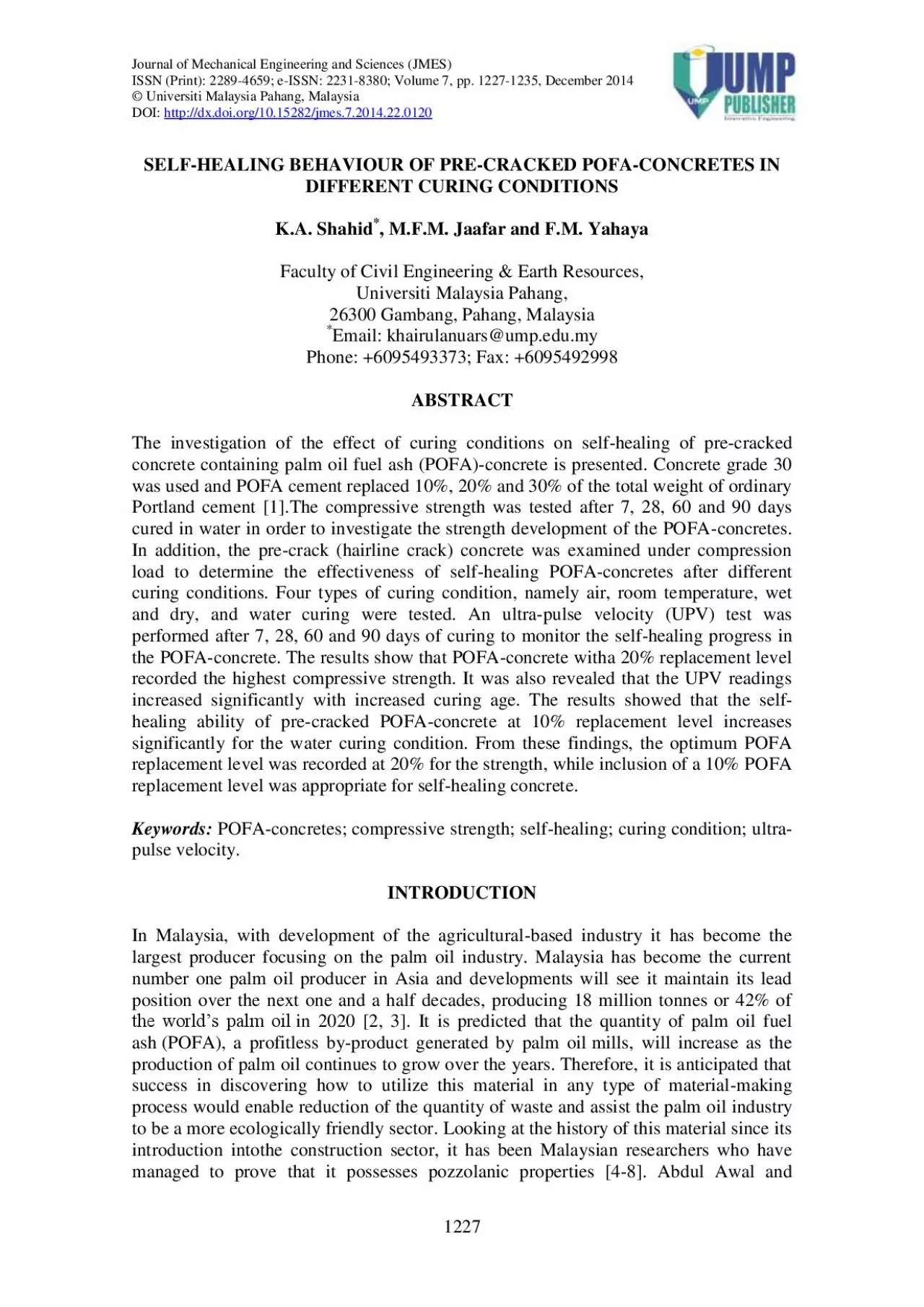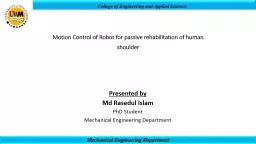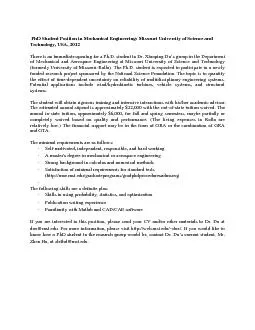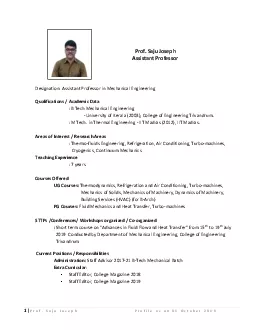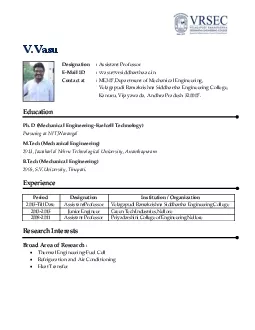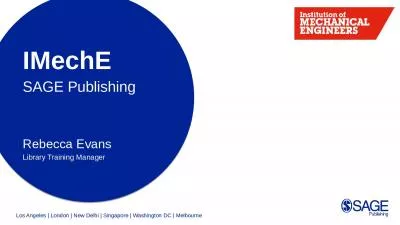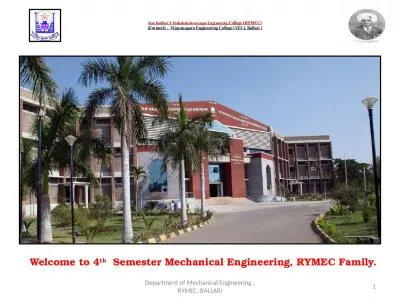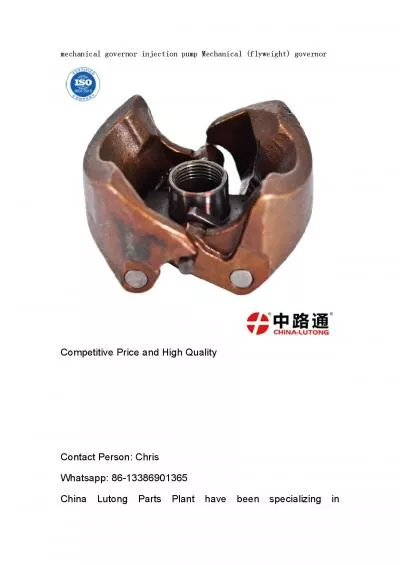PDF-Journal of Mechanical Engineering and Sciences JMES
Author : sadie | Published Date : 2021-08-26
ISSN Print 22894659 eISSN 22318380 Volume 7 pp 12271235 December2014 Universiti Malaysia Pahang MalaysiaDOI httpdxdoiorg1015282jmes720142201201227SELFHEALING BEHAVIOUR
Presentation Embed Code
Download Presentation
Download Presentation The PPT/PDF document "Journal of Mechanical Engineering and Sc..." is the property of its rightful owner. Permission is granted to download and print the materials on this website for personal, non-commercial use only, and to display it on your personal computer provided you do not modify the materials and that you retain all copyright notices contained in the materials. By downloading content from our website, you accept the terms of this agreement.
Journal of Mechanical Engineering and Sciences JMES: Transcript
Download Rules Of Document
"Journal of Mechanical Engineering and Sciences JMES"The content belongs to its owner. You may download and print it for personal use, without modification, and keep all copyright notices. By downloading, you agree to these terms.
Related Documents

